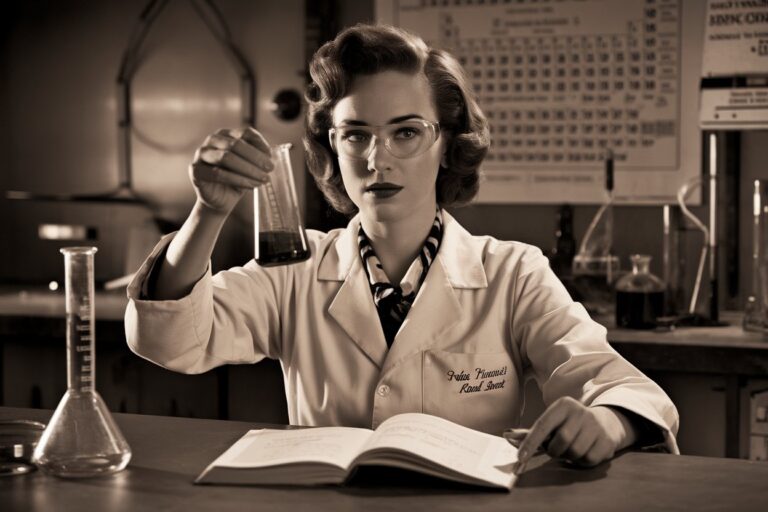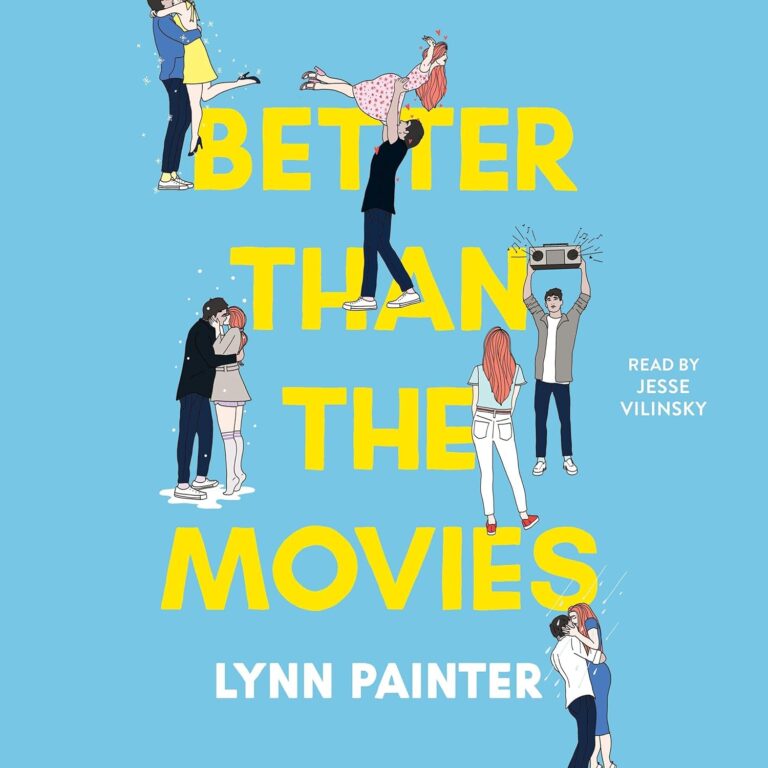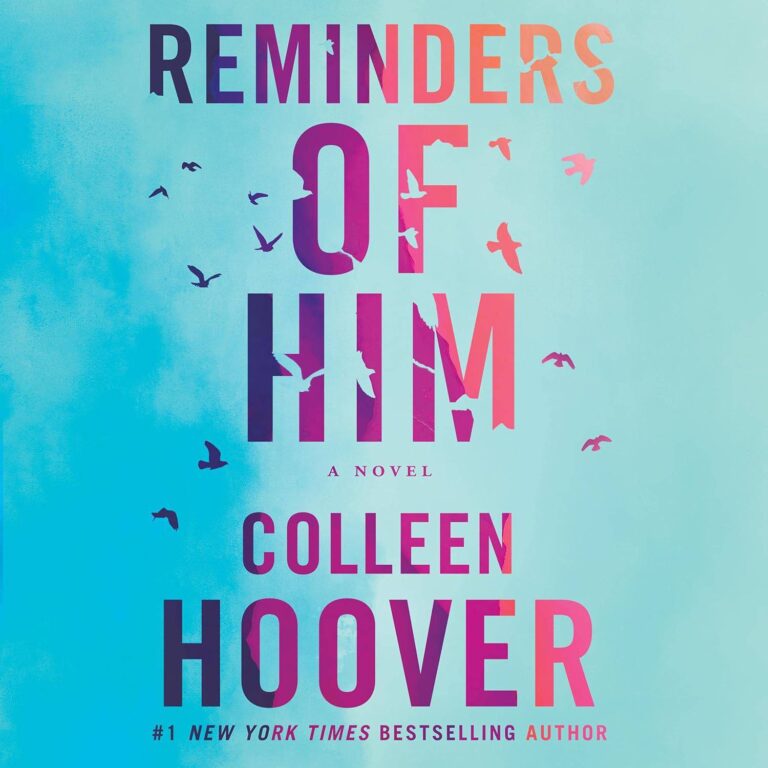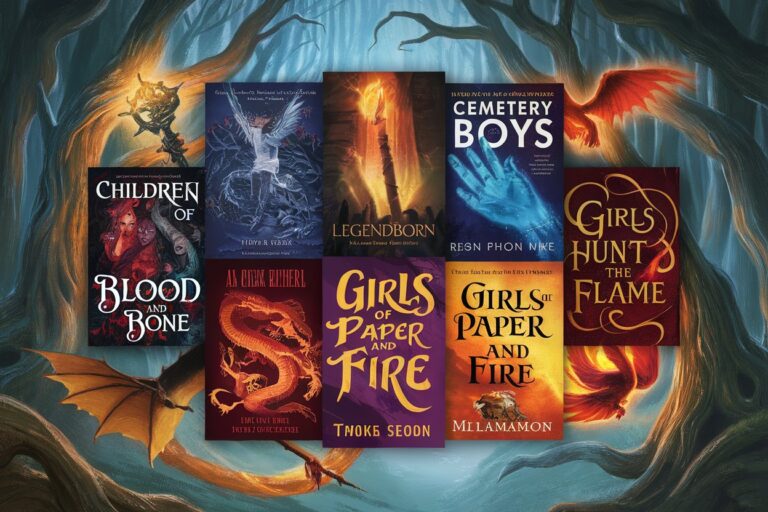Dive deep into “Lessons in Chemistry” with our comprehensive book club discussion guide. Explore gender equality, science, and society through thought-provoking questions and engaging activities.
In a world where book clubs are flourishing and literary discussions have found new life on TikTok, Bonnie Garmus’s Lessons in Chemistry has emerged as a phenomenon that demands to be discussed. As someone who’s spent countless hours analyzing this remarkable novel with fellow readers, I’m excited to share some unique discussion questions that will transform your next book club meeting from a simple conversation into an illuminating exploration of this compelling story.
Table of Contents
- The Science of Breaking Barriers: Elizabeth Zott’s Journey
- The 1960s: More Than Just a Setting
- The Supporting Cast: More Than Just Background Characters
- The Power of Words: Language and Communication
- Breaking Down Barriers: Gender and Professional Identity
- The Science of Relationships
- Modern Relevance and Contemporary Parallels
- The Art of Resilience
- Looking Forward: The Legacy of “Lessons in Chemistry”
- Must-Read BookTok Recommendations for “Lessons in Chemistry” Lovers
The Science of Breaking Barriers: Elizabeth Zott’s Journey
Let’s begin with the heart of the novel – our protagonist, Elizabeth Zott. Her character serves as a catalyst for some of the most profound discussions about gender roles and scientific pursuits in literature.
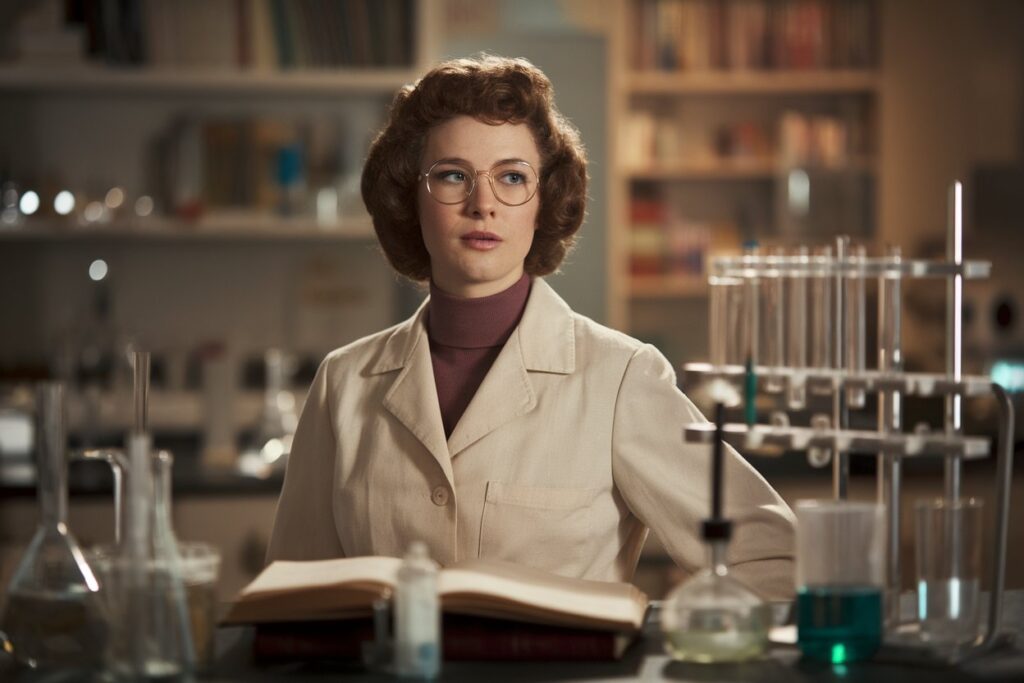
The Chemistry of Identity
Elizabeth Zott isn’t just a scientist; she’s a revolution in a lab coat. Consider these thought-provoking questions about her character:
- “If Elizabeth Zott were to write her own definition of success, what would it include, and how does this definition evolve throughout the novel?”
This question invites readers to examine how Elizabeth’s perception of success transforms from purely scientific achievement to something more nuanced. Her journey from the laboratory to television cooking show host presents a fascinating study of adaptation without compromise.
- “How does Elizabeth’s approach to cooking mirror her approach to chemistry, and what does this tell us about her character’s core values?”
The beauty of this question lies in how it reveals the consistency of Elizabeth’s character – her scientific precision and unwavering pursuit of truth manifest in everything she does, even in an arena traditionally considered “women’s work.”
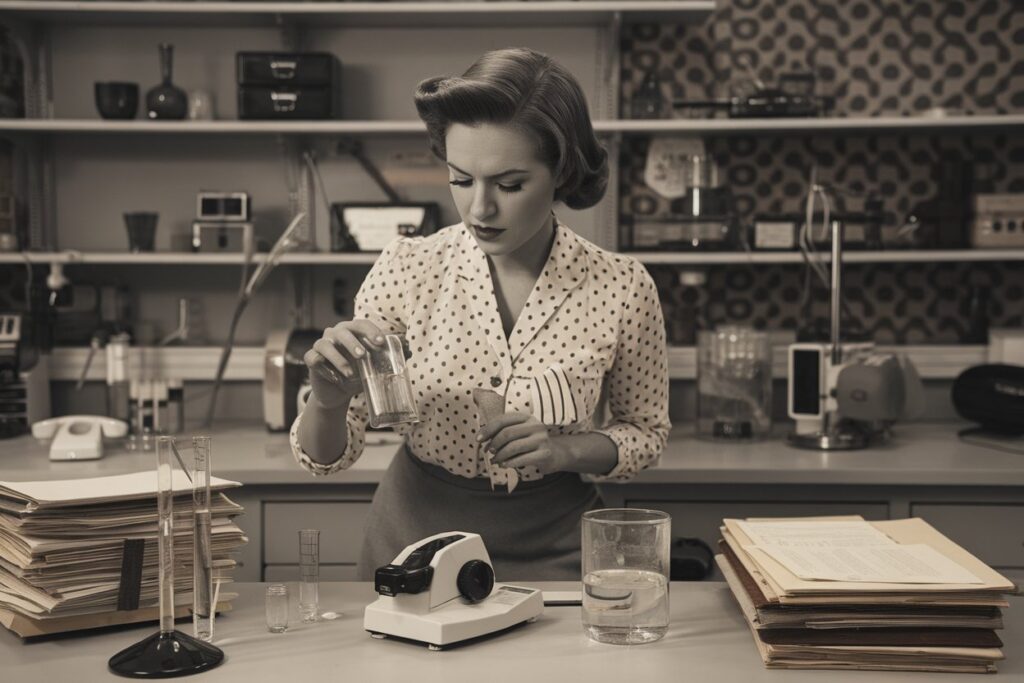
The 1960s: More Than Just a Setting
The novel’s 1960s setting isn’t merely a backdrop – it’s a character in its own right. Here are some questions that delve into this crucial aspect:
Time and Progress
- “If Elizabeth Zott existed in today’s world, what barriers might she still face? What barriers has society overcome?”
This question creates a bridge between past and present, encouraging readers to consider both progress made and challenges that persist in gender equality and professional recognition.
- “How does the novel’s treatment of workplace harassment resonate with modern movements like #MeToo?”
By examining historical instances of discrimination through a contemporary lens, readers can better understand both how far we’ve come and how far we still have to go.

The Supporting Cast: More Than Just Background Characters
The novel’s rich tapestry of supporting characters deserves special attention in any discussion.
Character Dynamics
- “How does Mad’s relationship with science differ from Elizabeth’s, and what does this tell us about different approaches to scientific pursuit?”
This question explores how different characters can have varying relationships with science while remaining true to their principles.
- “What role does Six-Thirty play in challenging traditional notions of intelligence and emotional capacity?”
The dog’s character offers a unique angle for discussing intelligence, loyalty, and the nature of understanding – perfect for generating engaging conversation.
The Power of Words: Language and Communication
Literary Devices and Meaning
- “How does the author’s use of scientific terminology as metaphors enhance our understanding of human relationships in the novel?”
This question opens up a discussion about the novel’s clever use of scientific language to illuminate emotional truths.
- “What is the significance of Elizabeth’s refusal to simplify her language on ‘Supper at Six,’ and how does this relate to larger themes of intellectual respect in the novel?”
Breaking Down Barriers: Gender and Professional Identity
Professional Evolution
- “How does Elizabeth’s transformation from chemist to cooking show host challenge or reinforce traditional gender roles?”
This question examines how Elizabeth maintains her identity as a scientist while working in a traditionally feminine sphere.
- “What role does mentorship (or the lack thereof) play in the professional development of female characters in the novel?”
The Science of Relationships
Personal Connections
- “How does Elizabeth’s approach to motherhood challenge or conform to societal expectations of the 1960s?”
- “What role does grief play in shaping Elizabeth’s character development and decision-making?”

Modern Relevance and Contemporary Parallels
Lasting Impact
- “How does Elizabeth’s story contribute to current discussions about women in STEM fields?”
- “What parallels can we draw between the resistance to Elizabeth’s teaching methods on ‘Supper at Six’ and current debates about science communication?”
The Art of Resilience
Personal Growth
- “How does Elizabeth’s definition of family evolve throughout the novel, and what factors influence this evolution?”
- “In what ways does the novel suggest that resilience can be both a strength and a burden?”
Looking Forward: The Legacy of “Lessons in Chemistry”
Future Implications
- “What lessons from Elizabeth’s story are most relevant for young women pursuing careers in science today?”
- “How does the novel’s treatment of work-life balance contribute to current discussions about gender roles and career choices?”
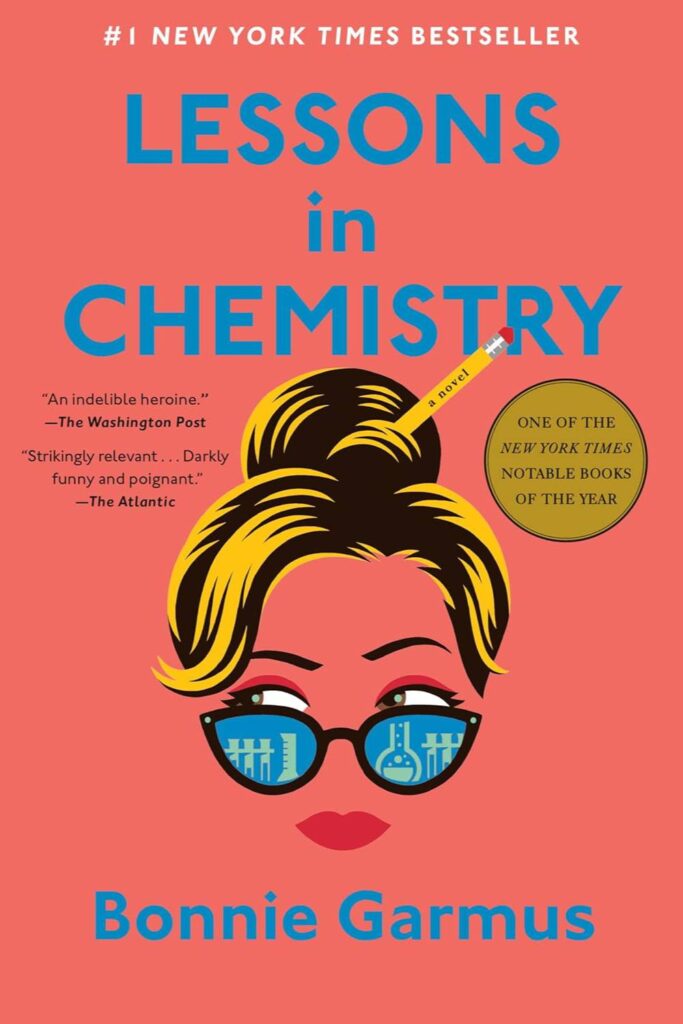
📚 Lessons in Chemistry by Bonnie Garmus
📖 Genre: Historical Fiction, Women’s Fiction, Literary Fiction
📚 Synopsis: In 1960s California, Elizabeth Zott is a brilliant chemist whose career takes an unexpected turn when she becomes the star of a beloved cooking show, “Supper at Six.” Through her unorthodox approach of teaching chemistry through cooking, she challenges the status quo and inspires women to change the established social order. The story follows her journey of love, loss, single motherhood, and refusing to compromise in a world that expects women to conform.
😭 Why Everyone Is Reading It:
- Readers are deeply moved by Elizabeth’s resilience and determination
- The unique narrative voice, including perspectives from Six-Thirty (the dog), has readers alternating between laughter and tears
- Many women in STEM fields are sharing emotional reactions about how the book reflects their own experiences
- TikTokers are creating videos about the “rowing scene” and their emotional responses
- The romance subplot has viewers posting heartbreaking reaction videos
- Readers love how the protagonist refuses to “dumb herself down” for others’ comfort
💬 Why BookTok is obsessed:
- The perfect blend of humor and serious themes resonates with modern audiences
- Elizabeth’s approach to cooking as chemistry has inspired countless TikTok cooking videos
- The dog’s character (Six-Thirty) has become a BookTok favorite, with many creators making POV videos
- Quotes about women’s empowerment are frequently shared and have gone viral
- The book’s examination of gender roles remains relevant, sparking discussions about modern workplace dynamics
- BookTok users are creating content around Elizabeth’s no-nonsense responses to sexism
- The combination of science, romance, and social commentary makes it highly discussable
The book has generated numerous TikTok trends, including:
- Chemistry-themed cooking videos
- Dramatic readings of Elizabeth’s most pointed comebacks
- “If Elizabeth Zott lived in 2024” POV videos
- Recipe recreations from “Supper at Six”
- Emotional reaction videos to key plot points
🔗 Available from: [amazon.com]
Must-Read BookTok Recommendations for “Lessons in Chemistry” Lovers
If you’ve finished “Lessons in Chemistry” and are craving more stories featuring strong women challenging societal norms, scientific intrigue, or historical fiction with modern relevance, here’s your ultimate BookTok-approved reading list. These selections have taken #BookTok by storm and share compelling thematic connections with Elizabeth Zott’s story.
Strong Women in STEM
“The Love Hypothesis” by Ali Hazelwood
TikTok Views: 197M+ for #TheLoveHypothesis Like “Lessons in Chemistry,” this contemporary romance features a woman navigating the male-dominated world of science. Ph.D. candidate Olive Smith’s fake-dating experiment with a grumpy professor has captured BookTok’s heart while highlighting real challenges women face in academia. The author, a neuroscientist herself, brings authentic STEM representation to romance.
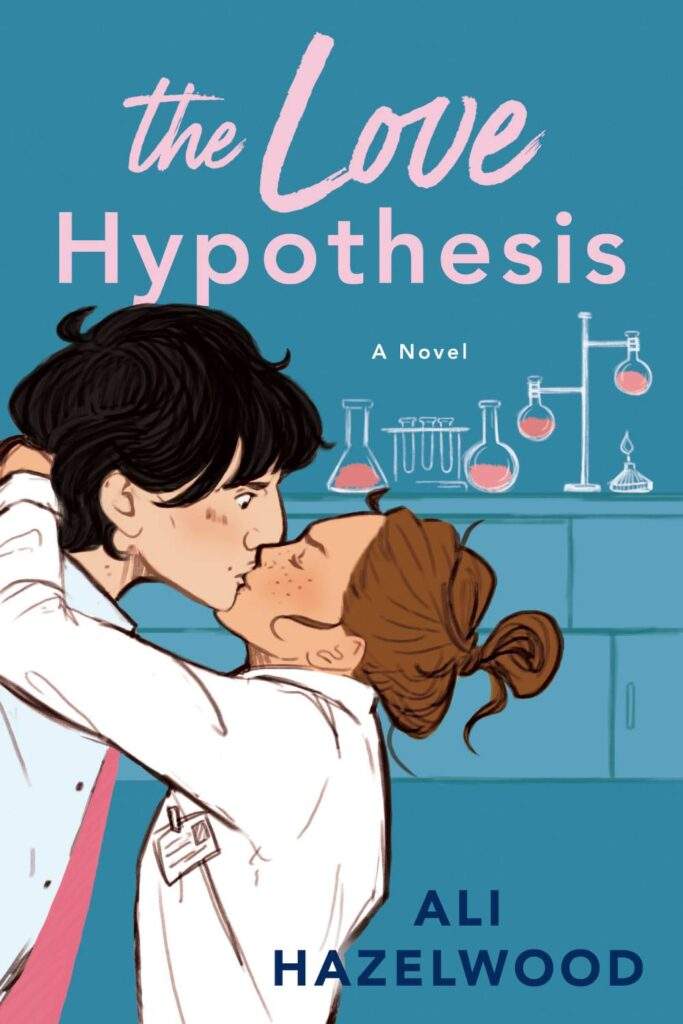
📚 The Love Hypothesis by Ali Hazelwood
📖 Genre: Contemporary Romance, Academic Romance 📚 Synopsis: A third-year Ph.D. candidate panics and kisses the first man she sees to prove to her best friend she’s dating. Unfortunately, he turns out to be a young, hot professor – who agrees to be her fake boyfriend.
😭 Why Everyone Is Reading It: Readers are swooning over the grumpy-sunshine dynamic and STEM representation. The realistic portrayal of academia plus steamy romance has created a perfect formula for BookTok’s success.
💬 Why BookTok is obsessed: The scientific accuracy (written by an actual neuroscientist!), the anxiety representation, and the way it tackles imposter syndrome in academia. Plus, Adam Carlsen has become BookTok’s newest book boyfriend.
🔗 Available from: [amazon.com]
“Remarkably Bright Creatures” by Shelby Van Pelt
TikTok Views: 89M+ for #RemarkablyBrightCreatures While not strictly about science, this BookTok sensation features a curious and intelligent protagonist who, like Elizabeth Zott, finds unexpected ways to apply scientific thinking to life’s challenges. The unique perspective of an octopus narrator offers fascinating insights into intelligence and observation, much like Six-Thirty’s viewpoint in “Lessons in Chemistry.”
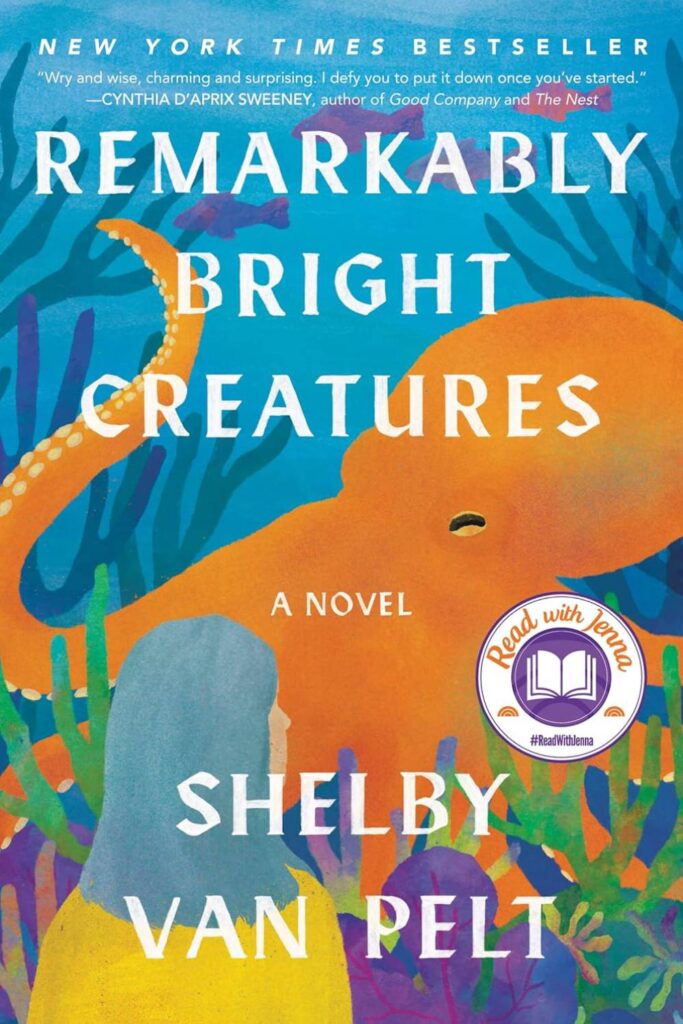
📚 Remarkably Bright Creatures by Shelby Van Pelt
📖 Genre: Literary Fiction, Contemporary
📚 Synopsis: A lonely widow who works the night shift at an aquarium forms an unexpected bond with a giant Pacific octopus who helps her unravel a family mystery.
😭 Why Everyone Is Reading It: Readers are emotionally invested in both the human and octopus perspectives, with many claiming they’ll “never look at seafood the same way again.”
💬 Why BookTok is obsessed: The unique narrative voice of Marcellus the octopus, the touching exploration of loneliness, and the way science and emotion intertwine throughout the story.
🔗 Available from: [amazon.com]
Historical Fiction with Modern Resonance
“Tomorrow, and Tomorrow, and Tomorrow” by Gabrielle Zevin
TikTok Views: 156M+ for #TomorrowAndTomorrowAndTomorrow This critically acclaimed novel explores genius, creativity, and gender in the tech world. Like Elizabeth Zott, protagonist Sadie Green navigates a male-dominated field while refusing to compromise her vision. The book’s examination of friendship, ambition, and innovation resonates with “Lessons in Chemistry” fans.

📚 Tomorrow, and Tomorrow, and Tomorrow by Gabrielle Zevin
📖 Genre: Literary Fiction, Contemporary
📚 Synopsis: A sweeping saga about two friends who collaborate on video game development, exploring their complex relationship over thirty years.
😭 Why Everyone Is Reading It: The emotional depth has readers posting crying videos and “book hangover” content. Many claim it’s changed how they view both friendship and creative collaboration.
💬 Why BookTok is obsessed: The gaming references, the platonic love story, and the way it handles themes of creativity, disability, and success. The ending has sparked countless discussion videos.
🔗 Available from: [amazon.com]
“The Diamond Eye” by Kate Quinn
TikTok Views: 78M+ for #TheDiamondEye Another historical fiction featuring a woman excelling in a traditionally male role, this story follows a librarian-turned-sniper during WWII. The protagonist’s precision and dedication mirror Elizabeth’s approach to both chemistry and cooking.
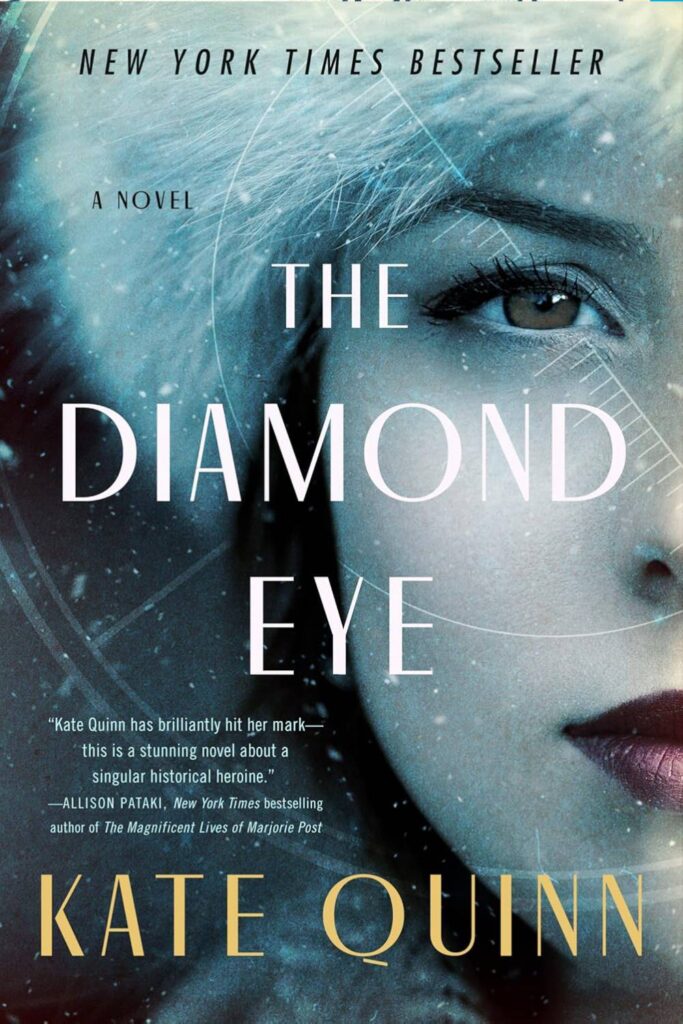
📚 The Diamond Eye by Kate Quinn
📖 Genre: Historical Fiction
📚 Synopsis: Based on the true story of Mila Pavlichenko, a Soviet woman sniper during WWII who becomes both a deadly force on the battlefield and an unlikely diplomat.
😭 Why Everyone Is Reading It: History fans are amazed by the true story elements, while others are drawn to the powerful female protagonist breaking barriers in a male-dominated field.
💬 Why BookTok is obsessed: The combination of historical accuracy, female empowerment, and thrilling action sequences. Plus, the romantic subplot has sparked numerous theory videos.
🔗 Available from: [amazon.com]
Breaking Societal Norms
“The Seven Husbands of Evelyn Hugo” by Taylor Jenkins Reid
TikTok Views: 2B+ for #EvelynHugo While set in Old Hollywood rather than the scientific community, this BookTok phenomenon shares themes with “Lessons in Chemistry” about women breaking barriers and refusing to conform to societal expectations. Both Evelyn Hugo and Elizabeth Zott navigate fame while maintaining their authenticity.

📚 The Seven Husbands of Evelyn Hugo by Taylor Jenkins Reid
📖 Genre: Historical Fiction, LGBTQ+
📚 Synopsis: An aging Hollywood starlet finally tells her life story to an unknown journalist, revealing shocking truths about her seven marriages and her greatest love.
😭 Why Everyone Is Reading It: The plot twists have readers gasping, with many filming their reactions to specific chapters. The LGBTQ+ representation has also garnered significant praise.
💬 Why BookTok is obsessed: The glamour of Old Hollywood, the complex morality of the characters, and the way it tackles themes of identity and sacrifice. The green dress scene has become legendary on the platform.
🔗 Available from: [amazon.com]
“Circe” by Madeline Miller
TikTok Views: 892M+ for #CirceBook This mythological retelling features a woman discovering her power through scientific experimentation (in this case, witchcraft). Like Elizabeth, Circe refuses to be defined by others’ expectations and finds strength in her expertise and independence.

📚 Circe by Madeline Miller
📖 Genre: Fantasy, Mythology Retelling
📚 Synopsis: A feminist retelling of the story of Circe, the goddess-witch from Homer’s Odyssey, chronicling her journey from outcast to powerful witch.
😭 Why Everyone Is Reading It: Readers are connecting deeply with Circe’s journey of self-discovery and empowerment. The beautiful prose has inspired countless quote-sharing videos.
💬 Why BookTok is obsessed: The feminist themes, the gorgeous writing style, and the way it reimagines a “villain” from classical mythology. The audiobook has also gained a strong following.
🔗 Available from: [amazon.com]
Contemporary Takes on Gender Roles
“Happy Place” by Emily Henry
TikTok Views: 234M+ for #HappyPlaceBook While more romance-focused than “Lessons in Chemistry,” this BookTok favorite examines how career women navigate relationships and societal expectations. The protagonist’s professional ambitions and personal struggles will resonate with fans of Elizabeth Zott’s story.
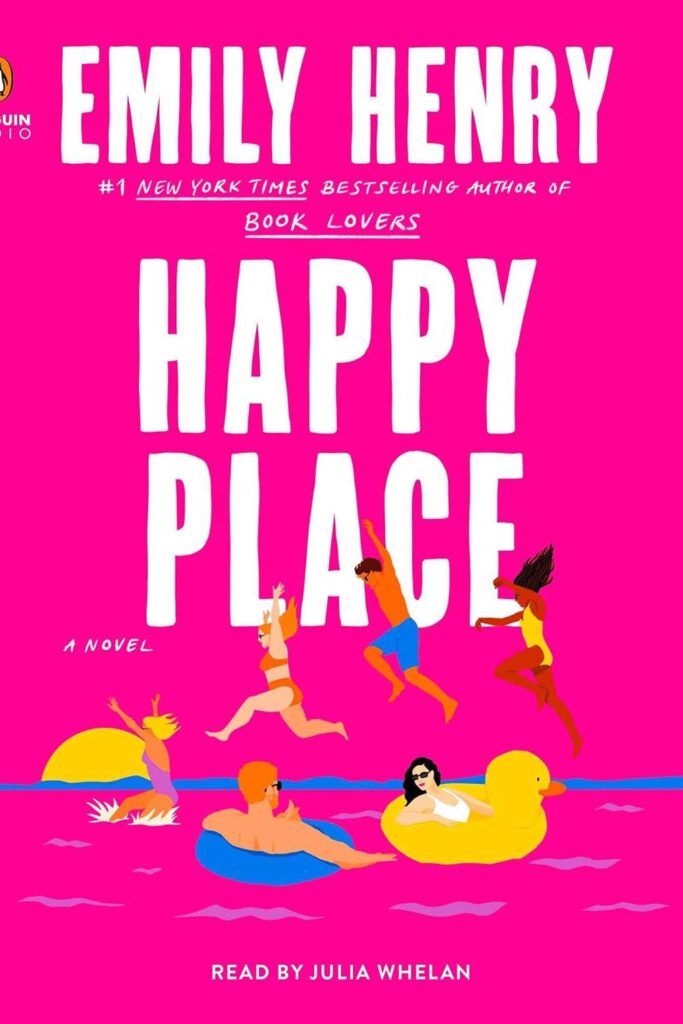
📚 Happy Place by Emily Henry
📖 Genre: Contemporary Romance
📚 Synopsis: A broken-up couple pretends to still be together for their friends’ wedding weekend at their favorite place, forcing them to confront their past.
😭 Why Everyone Is Reading It: The emotional complexity of readers posting about their own relationship experiences. The banter and chemistry between characters are frequently quoted.
💬 Why BookTok is obsessed: The exploration of adult relationships, the witty dialogue, and the way it handles themes of growth and change. The “second chance romance” trope execution is considered top-tier.
🔗 Available from: [amazon.com]
Science and Ethics
“Project Hail Mary” by Andy Weir
TikTok Views: 145M+ for #ProjectHailMary For readers who loved the scientific aspects of “Lessons in Chemistry,” this BookTok-approved sci-fi novel offers complex scientific problem-solving with ethical dilemmas. Like Elizabeth, the protagonist uses scientific methodology to overcome seemingly impossible challenges.
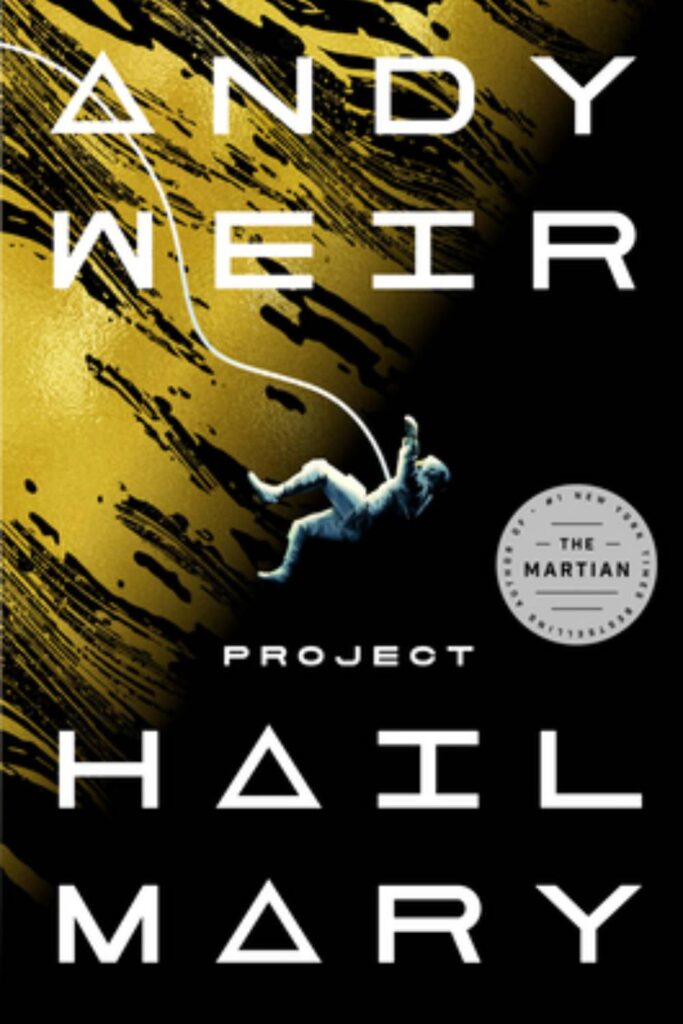
📚 Project Hail Mary by Andy Weir
📖 Genre: Science Fiction
📚 Synopsis: An astronaut wakes up alone on a spacecraft with no memory of how he got there, tasked with saving humanity from extinction.
😭 Why Everyone Is Reading It: The scientific accuracy combined with emotional depth has readers posting theory videos and reaction content. The friendship element has sparked numerous emotional responses.
💬 Why BookTok is obsessed: The perfect balance of hard science and human connection, the unique take on alien life, and the unexpected emotional core of the story. Rocky has become a BookTok favorite character.
🔗 Available from: [amazon.com]
Reading Tips for Maximum Enjoyment
- Create a “Lessons in Chemistry” inspired reading journal to track themes across these books
- Join BookTok reading challenges incorporating these titles
- Follow #BookTokRecs and #LessonsInChemistry for more recommendations
- Consider reading these books with your book club to compare and contrast with Elizabeth’s story
How to Join the BookTok Conversation
- Use hashtags like #BookTokMadeMe and #BookRecTok when sharing your reading journey
- Create transition videos between “Lessons in Chemistry” and these recommendations
- Share parallel quotes and themes across the books
- Start reading challenges combining multiple titles from this list
Conclusion: The Experiment Continues
“Lessons in Chemistry” offers more than just a story – it provides a framework for discussing persistent social issues through the lens of one woman’s remarkable journey. These discussion questions serve as starting points for a deeper exploration of the novel’s themes, characters, and lasting impact.
Remember, like any good experiment, book discussions benefit from careful observation, thoughtful analysis, and an openness to unexpected results. Whether you’re leading a book club or simply seeking to deepen your understanding of this remarkable novel, these questions will help guide you through the complex reactions and beautiful chemistry of Bonnie Garmus’s masterpiece.
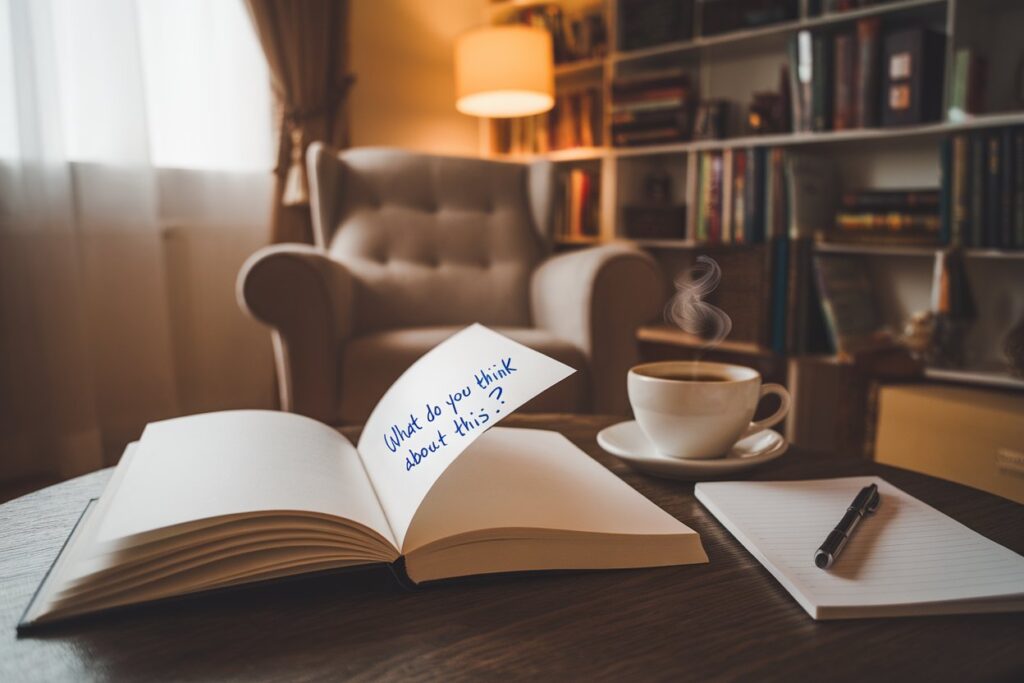
For more insights into “Lessons in Chemistry” and to join the ongoing conversation, consider joining our book club community or sharing your thoughts in the comments below. How has Elizabeth Zott’s story resonated with your own experiences?
